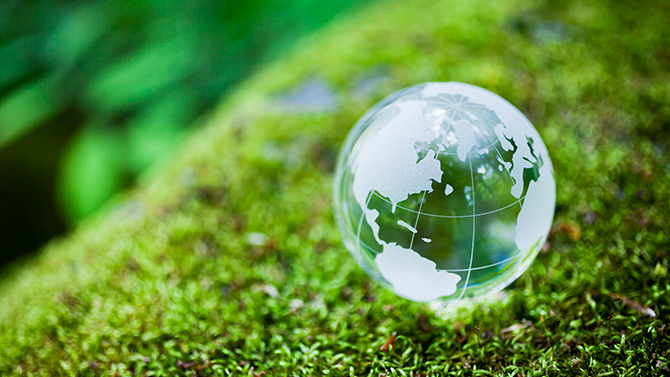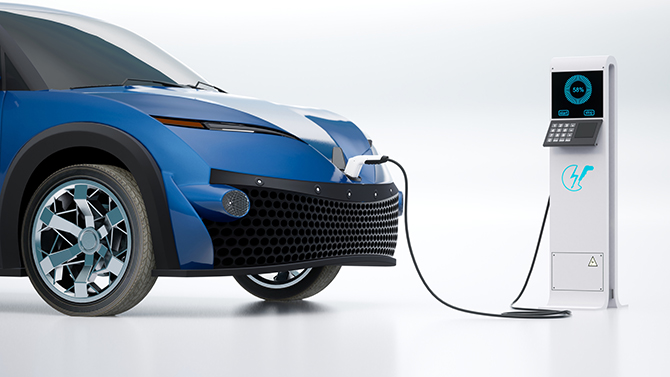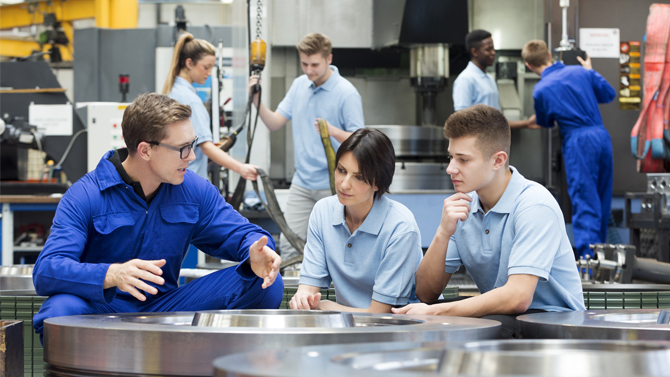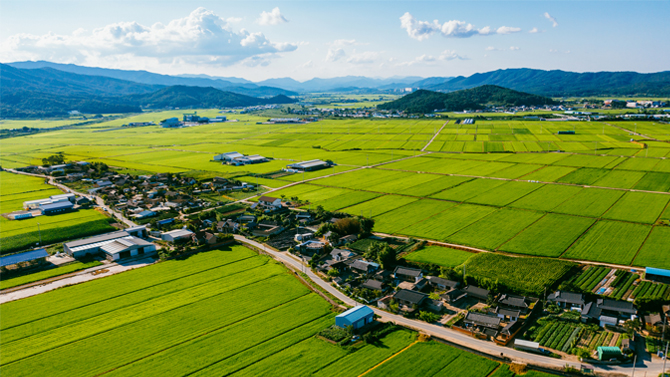Social Issues addressed by Sumitomo —Compass for the Future—
Rare metals recycling system targeting sustainable use of mineral resources
 Planetary Health
Planetary HealthSpanning five business fields—automotive, info-communications, electronics, environment & energy, and industrial materials—Sumitomo Electric, with operations in some 40 countries, is serving customers worldwide. One of its businesses that is below the radar as far as consumers are concerned is the manufacture of cemented carbide tools, which play a vital role in industry. High hardness, high wear resistance, and ultra-high heat resistance make cemented carbide essential for inserts and drills for high-speed machining. For everything from automotive to industrial materials, cemented carbide tools are indispensable.
Tungsten is essential in the production of cemented carbide. At present, 80% of the tungsten Sumitomo Electric uses for production of cemented carbide tools in Japan is imported, mainly from China. Moreover, the risk associated with the depletion of tungsten resources is becoming more acute and requires concerted action. To ensure stable supply of cemented carbide, Sumitomo Electric has changed course from import-dependence to recycling.

How are cemented carbide alloys produced using tungsten? First, tungsten ore is refined to tungsten trioxide (WO3). Next, through reduction and carburization, tungsten carbide (WC) is produced. Then, WC is mixed with metals such as cobalt and tantalum to produce a powder, which is a raw material for the production of cemented carbide. WC, a tungsten compound, is produced to suit the cemented carbide specifications of Sumitomo Electric and other companies. On the other hand, WO3, a general-purpose intermediate raw material, accounts for the bulk of the raw material used in the production of WO3. So, recycling-based WO3 production is the key to cemented carbide production dispensing with tungsten ore refining.


Sumitomo Electric, which has been recycling cemented carbide scrap into raw materials since the 1990s to facilitate stable supply of tungsten, began developing new recycling technology in the late aughts. By 2011, the company had developed a new chemical process enabling production from scrap of WO3 whose purity is equivalent to that of commercially available WO3. Sumitomo Electric proceeded to establish a recycling base at Toyama Works, a subsidiary, employing a system for producing WO3 from cemented carbide tools collected from customers.

Sumitomo Electric purchases scrap tools from its customers for recycling and reuse in the manufacture of cemented carbide tools. It is a win-win solution: while customers benefit because their used tools become valuable resources, Sumitomo Electric obtains tungsten raw materials. The tungsten content of cemented carbide tool scrap dwarfs the tungsten content of tungsten ore, which is less than 1%, and moreover, the environmental impact of obtaining WO3 from scrap is minimal, another big advantage.
Sumitomo Electric has thus established a promising recycling process that makes excellent use of valuable resources. The amount of raw materials currently obtained from tungsten recycling in Japan is equivalent to the amount required for the manufacture of cemented carbide tools shipped by Sumitomo Electric in the Japanese market.
A recycling system Sumitomo Electric established in Japan in cooperation with Toyota Motor Corporation is a notable example of tungsten recycling. Aiming to not only reduce raw material procurement risks but also reap economic benefits while resolving social issues through the recovery of scrap, the company has set up a recycling system that supports the sorting of scrap for reuse, achieving 100% recovery and recycling of tungsten.
Recognizing that a recycling base only in Japan would be insufficient to respond effectively to diverse risks, Sumitomo Electric established Niagara Refining LLC (NIRE), a joint venture with a tungsten powder manufacturer in the U.S., constructing a plant near Buffalo, New York State, in 2011. This is the Group’s global base for tungsten ore refining and recycling operations. Plans call for introduction of mass-production equipment in 2023 for the recycling process so that Sumitomo Electric can secure tungsten production volumes not only in Japan but also globally through tungsten recycling. Thus, a global recycling system for integrated production from recycled raw materials to finished cemented carbide tool products will be completed, which is good news for coexistence with the global environment.


Read about initiatives to achieve a low-carbon society, aiming at net-zero greenhouse gas emissions since these emissions are implicated in global warming.

In view of ongoing globalization and the growing complexity of supply chains, companies need to respond appropriately to issues in supply chains.

The pace of workstyle reform is accelerating as the COVID-19 pandemic has prompted numerous companies to embrace novel ways of working.

For companies, the COVID-19 pandemic has brought the crucial importance of employee health into sharp focus.

Accelerating global warming poses serious business risks. Accordingly, companies need to formulate strategies and implement specific countermeasures from a medium- to long-term perspective.

Spurred by efforts to reduce environmental impacts and in line with increasing social needs, replacement of gasoline-powered vehicles with electric vehicles is accelerating.

Vigorous initiatives are afoot to tackle social issues by revitalizing communities and the interpersonal relationships that bind them together.

Poverty persists in contemporary Japan and the existence of child poverty is a grave concern.

In view of the continuing decline of Japan’s working age population, due to population aging coupled with a low birthrate, development of the next generation is an urgent issue.

The rapid progress in medicine in recent years is largely due to the efforts of not only universities and other research institutions but also of companies to develop cutting-edge technologies.

Numerous initiatives to promote industry and commerce at the regional and community level are underway, involving the use of renewable energy and thus contributing to decarbonization.

One-third of food produced is lost or wasted globally, amounting to about 1.3 billion tons per year. Food loss and waste is a pressing issue in need of a solution.

Companies are addressing a wide range of issues so that people and companies can coexist in harmony with the global environment.

In addition to natural disasters, there are various types of hazards whose nature, incidence and severity are changing with the times. Resilience and flexibility are indispensable in dealing with them.

Read about initiatives to achieve sustainable regional revitalization. The attributes and resources that each region can offer are leveraged to strengthen local economies and overcome the problem of population decline.